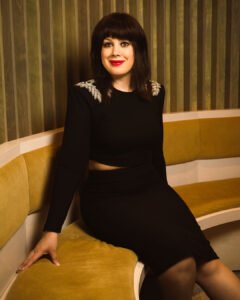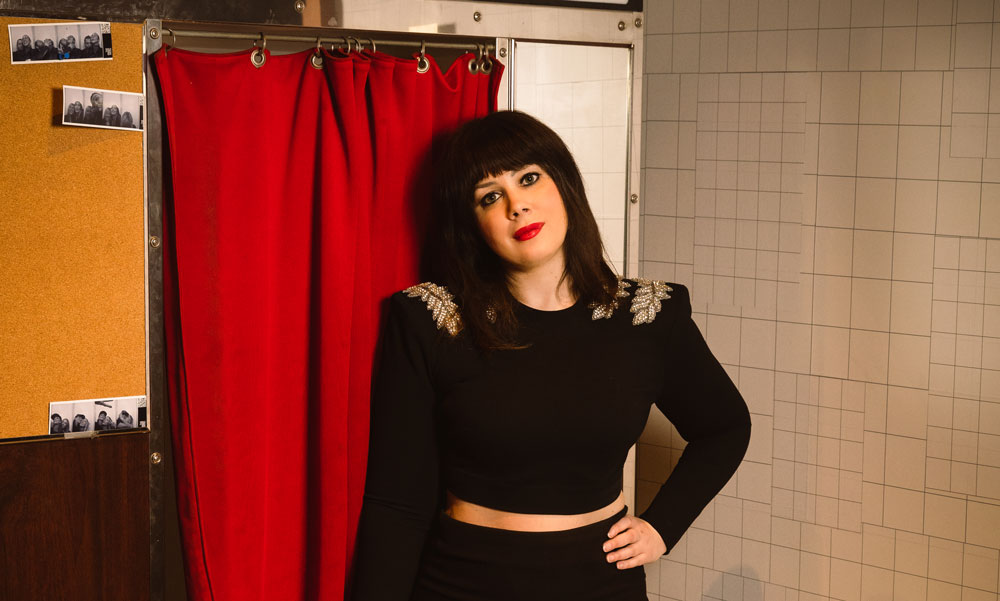This profile of chief creative officer Lauralee Sheehan is part of Street Meet, FLEETSTREET’s series, where we meet up with trailblazers and thought leaders to deliver unique insight and inspiration into issues we all care about.
When sparking creativity (whether it’s trying to find a solution or simply expressing myself in an artful way), I always try to come at things from a different perspective. I try to get out of the clutter and noise telling me where I should be going. So, when I learned that Digital 55 founder, filmmaker and storyteller Lauralee Sheehan leads all sides of her business with a background in music and a passion for growing her business, I knew I found my people. I wanted to know how she brings creativity to the business side of things, without losing herself in all the numbers and targets.
Here’s our conversation (edited for length and clarity).
FLEETSTREET: You’re obviously a creative, but you’re also an entrepreneur. How do these intersect for you?
Lauralee Sheehan: On the concept side of my work, people always just think, “Oh, you’re creative; you can just come up with a concept. In terms of business, you have to go through steps and stages to build something. You’ve got to scaffold your strategy. But both call on you to be creative.

Some of the best musicians that can do crazy stuff, it seems to come off the top of their head. But they’re practicing scales, going through the notes. All day. For years. It’s really that functional.
And I get a bit annoyed when people marginalize creativity and don’t recognize how complex it is. They can dismiss the deep thinking and all the things that go into creativity. People aren’t just floating around being creative. It’s a lot of work, actually.
And then on the business side, there are those that don’t think it’s creative to build and run a business strategically. And even the financials are a mix of creativity and innovation with the more technical, pragmatic, practical things you have to think about. But there is this kind of magic hybrid of being able to open up opportunities to do really interesting things.
Nailed it—Kristen Gale on leveling up.
FS: How do you balance being a multi-creative while being a businessperson?
LS: Creativity is a non-negotiable for me. I embed creativity and those things that spark creativity in my lifestyle. For me, it’s not “this hour I’m going to be creative.” You have to infuse it your life.
When I was in the band, I used to go to shows every night of the week. That was exhausting, but also life-giving to see what other musicians were doing and listening to all sorts of music. That was the lifestyle. That was the choice to say, “This is going to be creative for me.”
Whatever you do, you should find pockets of creative inspiration and feeling creative in terms of the vibe around you.
The power of intuition: Discover how to tap into your inner voice (it’s easier than you think).
FS: How do you incorporate creativity in your day?
LS: Obviously, one thing is music. Sometimes, I listen to music in different ways, like on Spotify. With vinyl, I actually have to get up and change the record. So, the format is also important for me.
Also, being kind of aware of what’s happening around me. I find that walking also is a way I stay creative. Say, if you’re walking and not on your phone, like you can actually be listening and hear things like music. I walk a lot. I think it was songwriter Elliot Smith who said he would walk a lot and then would record.
So, even if you’re not doing something that that seems creative, the mechanical nature of walking lets your mind become imaginative. If I’m having a business problem that’s super mundane, I just walk. Then I figure it out and am glad I don’t have to think about it again.
A daily walk: On the path to a better life.
FS: Are innovation and creativity the same thing for you?
LS: I think they’re really different. One can support the other, but they don’t always go together. Some people are creative but not necessarily innovative.
Innovation is where the business side really comes in. You have to be fearless. If we’re going to try this innovative thing, I’m going to invest so much money into it. If it doesn’t go well, you have to be OK with that.
With creativity, you can explore things. But those same risks are not necessarily there. You’re not thinking, “I could lose my business if this doesn’t go well.” Risk taking is really important for innovation, and that’s not necessarily always the case for creativity.
What’s Lucky Girl Syndrome? Why you should jump on TikTok’s latest trend.
FS: What inspires you in your business?
LS: It changes. My company is in its sixth year. As an entrepreneur over the years, I’ve had to change my focus and my inspiration. Interestingly, years five and six were a lot harder than I expected them to be. In the beginning, I just wanted to do cool stuff, and everything was “a win.”
As an entrepreneur, you’re looking at what you’ve built and what you’re trying to build next. You have salaries and people that depend on you. You have to have big portfolios. Those responsibilities are nail biting. It doesn’t seem as free-form as it once was. I guess, I kind of miss that, but I understand I can’t be like that anymore.
Smart scaling is not talked about enough. That’s creativity and innovation within your budget. It’s doing more with less, and not having to sacrifice the things you want to move forward with. Smart scaling is about asking how you can incrementally grow your business, so you’re always able to reinvest back into it. Then you don’t end up only working on other people’s stuff. That will provide a lot of value for your company and your creative output.
We do two types of producing: what we produce, and what we partner produce. We have our own content, which is really exciting. That we’ve been able to invest into that part of the business and get that off the ground is new.
Our portfolio is focused on subculture content. I don’t know if it’s something I’ve been chasing my whole life, in terms of being like a creative and an innovator. I always look for something underground, before it becomes mainstream. That includes music, art, and creativity and innovation. We have a project called Cool Hunter, and it’s documenting and storytelling subcultures, such as cannabis.
Preloved Fitness Wear: The active duo behind the seams.
FS: How do you borrow from other experiences or skills or background for your business today?
LS: Music and film. I grew up on film sets, and I worked on a bunch of indie films when I was in my 20s. I take that collaboration from the filmmaking process. It is very much how we operate.
With film, there are different skill sets in the film model. So, I’m looking at who could be in our collaborator matrix. You never know what someone might bring to the table or how your approaches can intersect and create magic.
Behind the greens: The Mandy’s Gourmet Salads dynamic duo.
FS: When are you your most creative? Is it a certain time of day? Do you try to take advantage of that?
LS: That, too, has changed. Now I’ll wake up at five in the morning and think of something I can do. That was never me before. Now, I love the times when no one else is awake. It’s when you’re not looking at emails, not even checking your phone. You’re just really in the moment and can go really immersive into something. That can happen late at night, too.
I’m never creative in the afternoon, between 11 a.m. and 4 p.m. That’s when I try to do functional stuff. So, I will see an afternoon movie, on a whim. I always feel more creative afterwards, especially if I do it at an unusual time, say 1 p.m. on a Wednesday.

